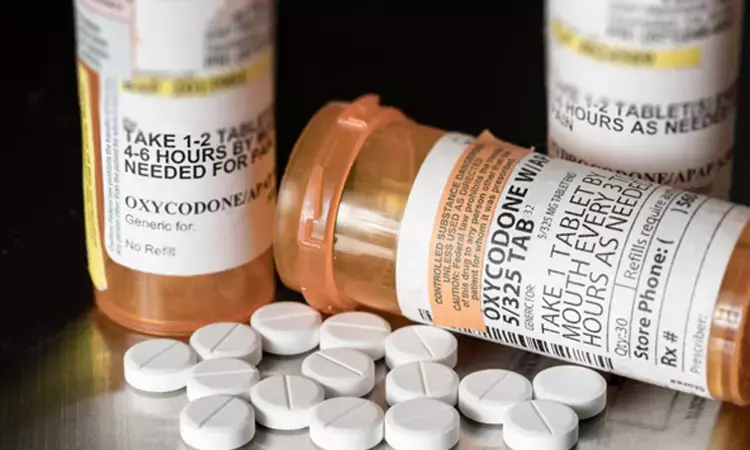- Home
- Medical news & Guidelines
- Anesthesiology
- Cardiology and CTVS
- Critical Care
- Dentistry
- Dermatology
- Diabetes and Endocrinology
- ENT
- Gastroenterology
- Medicine
- Nephrology
- Neurology
- Obstretics-Gynaecology
- Oncology
- Ophthalmology
- Orthopaedics
- Pediatrics-Neonatology
- Psychiatry
- Pulmonology
- Radiology
- Surgery
- Urology
- Laboratory Medicine
- Diet
- Nursing
- Paramedical
- Physiotherapy
- Health news
- Fact Check
- Bone Health Fact Check
- Brain Health Fact Check
- Cancer Related Fact Check
- Child Care Fact Check
- Dental and oral health fact check
- Diabetes and metabolic health fact check
- Diet and Nutrition Fact Check
- Eye and ENT Care Fact Check
- Fitness fact check
- Gut health fact check
- Heart health fact check
- Kidney health fact check
- Medical education fact check
- Men's health fact check
- Respiratory fact check
- Skin and hair care fact check
- Vaccine and Immunization fact check
- Women's health fact check
- AYUSH
- State News
- Andaman and Nicobar Islands
- Andhra Pradesh
- Arunachal Pradesh
- Assam
- Bihar
- Chandigarh
- Chattisgarh
- Dadra and Nagar Haveli
- Daman and Diu
- Delhi
- Goa
- Gujarat
- Haryana
- Himachal Pradesh
- Jammu & Kashmir
- Jharkhand
- Karnataka
- Kerala
- Ladakh
- Lakshadweep
- Madhya Pradesh
- Maharashtra
- Manipur
- Meghalaya
- Mizoram
- Nagaland
- Odisha
- Puducherry
- Punjab
- Rajasthan
- Sikkim
- Tamil Nadu
- Telangana
- Tripura
- Uttar Pradesh
- Uttrakhand
- West Bengal
- Medical Education
- Industry
Novel potent opioids require higher naloxone dosing than fentanyl, tied to high cardiac arrest rates

Synthetic opioids, particularly the potent fentanyl analogues and the relatively lesser-known nitazene drug class, are rapidly emerging as a concerning trend in the landscape of illicit drug overdose cases. These potent opioids have been causing havoc, leading to a surge in emergency department (ED) admissions. A recent cohort study, conducted from 2020 to 2022, sought to shed light on the clinical outcomes and naloxone administration in patients presenting with nitazene overdose compared to fentanyl overdose.
The study, part of the ongoing nationwide ToxIC Fentalog cohort study, focused on adults admitted to EDs who tested positive for novel potent opioids (NPOs). These NPOs included brorphine, isotonitazene, metonitazene, and N-piperidinyl etonitazene. In total, 717 patients met the inclusion criteria, with 11 (2.0%) testing positive for fentanyl only and 9 (1.7%) for NPOs.
The results revealed significant disparities in naloxone administration between the two groups. Patients in the NPO group received a substantially higher mean number of naloxone boluses during their hospital stay (1.33) compared to the fentanyl group (0.36). This marked contrast corresponded to a moderately large effect size, suggesting that NPO overdoses required more intensive intervention.
Moreover, within the NPO group, metonitazene overdoses stood out as particularly concerning. Patients overdosing on metonitazene experienced cardiac arrest, necessitating even more naloxone doses. On average, these cases required three naloxone doses, highlighting the severe nature of metonitazene overdoses. Alarmingly, all patients with metonitazene overdoses required cardiopulmonary resuscitation, underlining the life-threatening potential of this synthetic opioid.
These findings underscore the urgent need for further research and awareness regarding the management of synthetic opioid overdoses, especially nitazenes like metonitazene. The study's results suggest that these newer, potent opioids may pose a unique challenge to healthcare providers and require more aggressive naloxone intervention compared to traditional opioids like fentanyl. The battle against the opioid crisis continues, with the emergence of synthetic opioids emphasizing the need for flexibility and innovation in healthcare responses.
Source:
Amaducci, A., Aldy, K., Campleman, S. L., Li, S., Meyn, A., Abston, S., Culbreth, R. E., Krotulski, A., Logan, B., Wax, P., Brent, J., Buchanan, J., Calello, D., Judge, B., … Levine, M. (2023). Naloxone Use in Novel Potent Opioid and Fentanyl Overdoses in Emergency Department Patients. In JAMA Network Open (Vol. 6, Issue 8, p. e2331264). American Medical Association (AMA). https://doi.org/10.1001/jamanetworkopen.2023.31264
Neuroscience Masters graduate
Jacinthlyn Sylvia, a Neuroscience Master's graduate from Chennai has worked extensively in deciphering the neurobiology of cognition and motor control in aging. She also has spread-out exposure to Neurosurgery from her Bachelor’s. She is currently involved in active Neuro-Oncology research. She is an upcoming neuroscientist with a fiery passion for writing. Her news cover at Medical Dialogues feature recent discoveries and updates from the healthcare and biomedical research fields. She can be reached at editorial@medicaldialogues.in
Dr Kamal Kant Kohli-MBBS, DTCD- a chest specialist with more than 30 years of practice and a flair for writing clinical articles, Dr Kamal Kant Kohli joined Medical Dialogues as a Chief Editor of Medical News. Besides writing articles, as an editor, he proofreads and verifies all the medical content published on Medical Dialogues including those coming from journals, studies,medical conferences,guidelines etc. Email: drkohli@medicaldialogues.in. Contact no. 011-43720751


